Can You Taste Where Your Water is From?
When water is purified, ‘pixie dust’ is added back in.

Natural water has a distinctive taste of place. (Photo: Alden Chadwick/CC BY 2.0)
Tap water in Tokyo is not the same as what streams from a San Francisco sink, in the same way that San Pellegrino spring water, sourced in Italy, tastes distinct from Kona Deep, bottled in Hawaii. Natural waters are like snowflakes, in that no two are exactly alike.
A sense of place imbues the water from every tap and spring. Just as Merlot from Napa Valley and Merlot from Bordeaux have unique flavors to the discerning tongue, so does the water that sustains those vineyards.
However, when water is rendered “pure” by purified water companies, its sense of place is erased. With everything sucked out, says water expert Martin Riese, the water at that point is essentially dead, left with no more of its natural benefits.
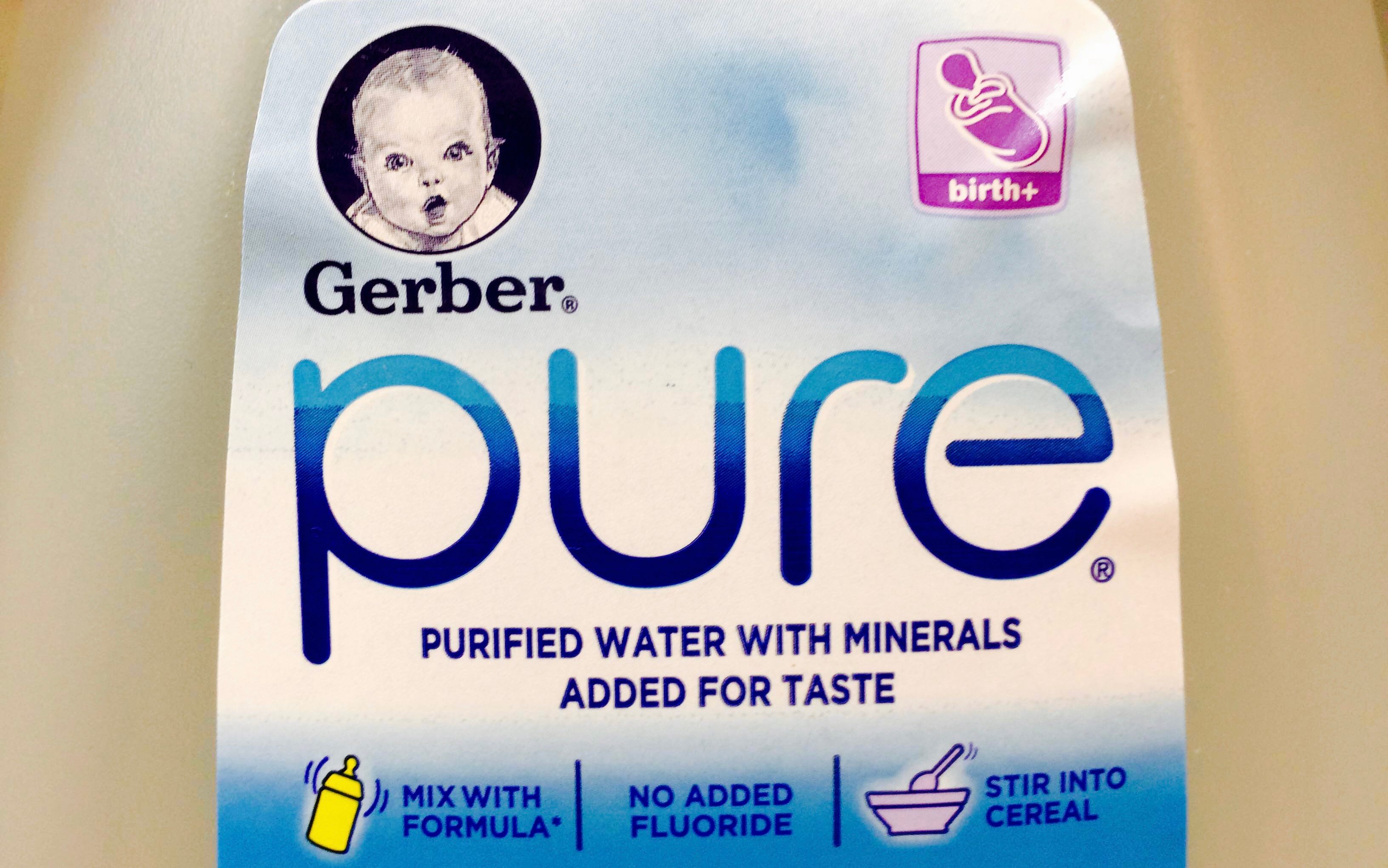
What is “pure”? What is “purified”? Why does it need minerals? (Photo: Tao Tao Holmes)
Riese is America’s first and only certified “Water Sommelier.” He began his water tasting career in Germany, where he received a professional certification in 2011. Hoping to increase the appreciation and understanding of water, he created his first “water menu” in 2005, and has since created water programs across Los Angeles.
In his Water 101 Class, he educates students on the qualities and characteristics of mineral water, explaining how you can taste the region and depth from which the water comes—called terroir—and mineral levels, which influence flavor. Our bodies need minerals—magnesium, calcium, potassium—to survive, and in water, minerals provide taste and prevent damaging corrosiveness.
Most people have no idea what they’re actually buying when it comes to water, says Riese, and the term “purified” is very misleading. People love the idea of “pure,” but don’t know what it signifies. This stuff is not normal or natural, he says. “Purified water is nothing else than processed food.” As the U.S. Geological Survey explains it, “Pure water is a kind of theoretical concept.”
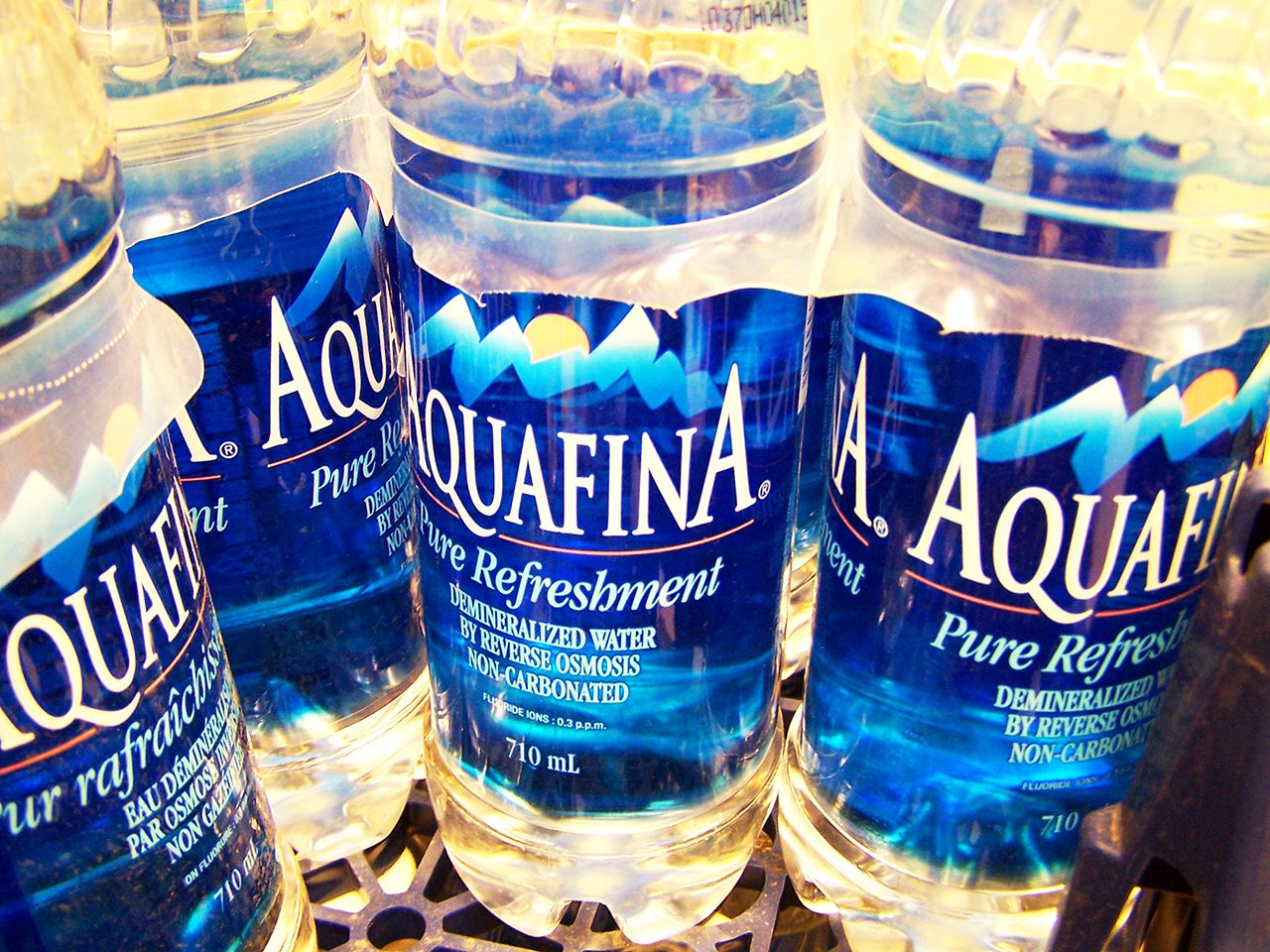
Aquafina “demineralized water by reverse osmosis” relies on a “pixie dust” mineral additive. (Photo: Diego Torres Silvestre/CC BY 2.0)
When bottled water companies such as Dasani and Aquafina purify water before putting it on shelves, they take all the naturally existing minerals, gases, and organic matter out, and then add other elements back in. In his book, Bottled and Sold: The Story Behind Our Obsession with Bottled Water, environmental scientist Peter Gleick refers to this mysterious mineral additive injected into the water of brands like Dasani and Aquafina (owned by Coca Cola and PepsiCo) as “pixie dust.”
Pixie dust is the additive that makes every bottle of purified water taste the same, no matter which brook it first babbled from. This means that whether Dasani is sourcing tap water from Sacramento, Jacksonville, or Philadelphia (and disproportionately from drought zones), every single bottle will taste identical, all sharing a tasteless placelessness.
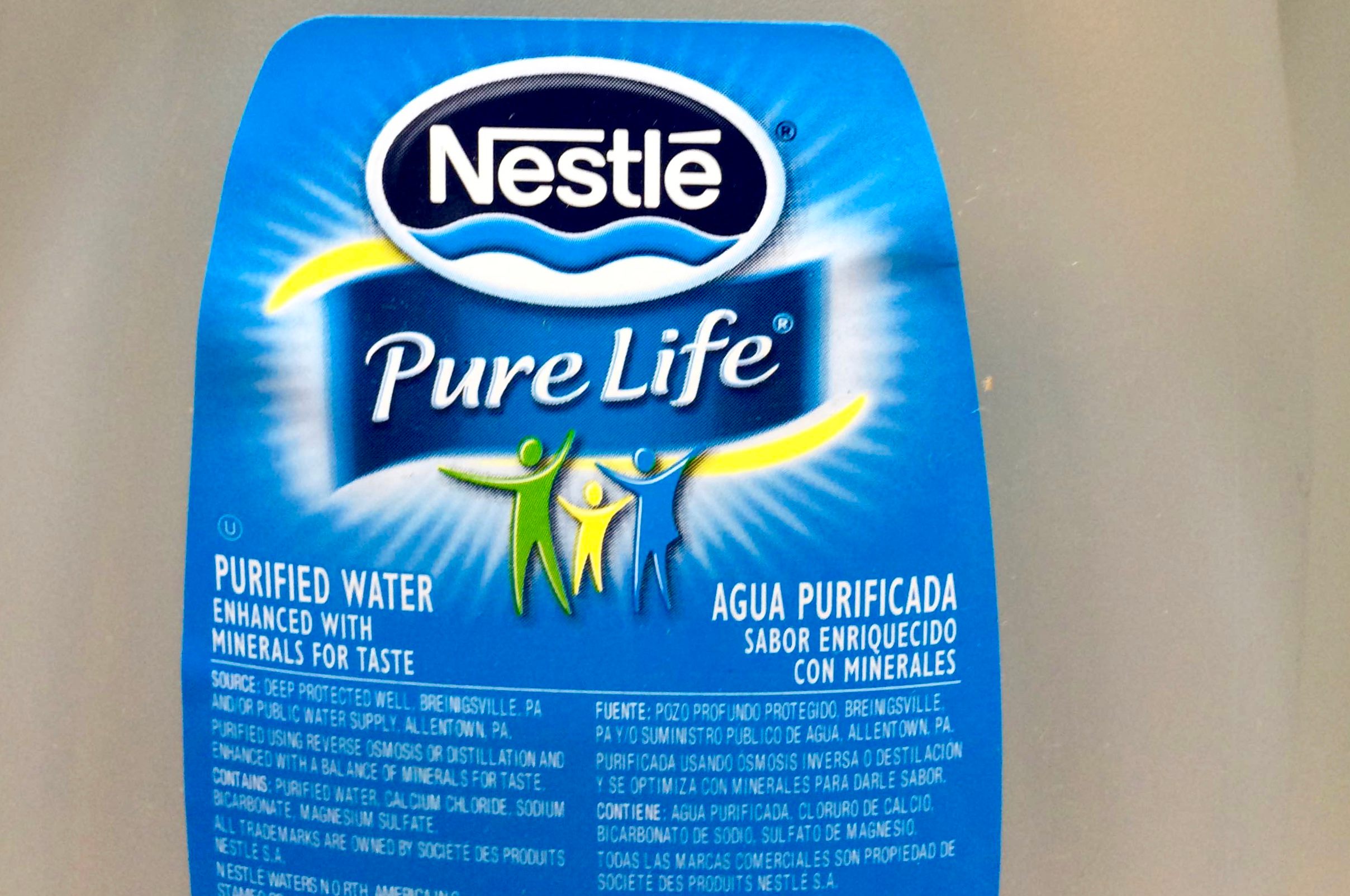
Nestle bottled water, guaranteeing more purity. (Photo: Tao Tao Holmes)
Aquafina, Dasani, and others will not disclose what’s in their pixie dust; the contents of these mineral additives are not publicly available. “Apparently that information is proprietary; they don’t give it,” says Susan Richardson, a professor of chemistry at the University of South Carolina. “It’s so strange to me, I couldn’t find the levels [of minerals] they add either. I’m just guessing they don’t want their competitors to know, to copy them.” Each brand has its own pixie dust, though their purified waters all taste more or less alike.
What’s also odd, says Richardson, is that as a chemist, she could easily find out the water’s mineral composition, so competitors too, could run samples. She guesses that the “pixie dust” involves a combination of magnesium sulfate, potassium chloride, and sodium chloride, which are all things you naturally find in water and which prevent corrosiveness. (It’s the same thing that happens at desalination plants, she points out: adding back minerals after everything gets sucked out.)
However, our tap water is still more controlled and regulated than bottled water, says Richardson, the former overseen by the EPA and the latter by the FDA. Not all bottled water is tested, whereas almost every batch of tap water is monitored.
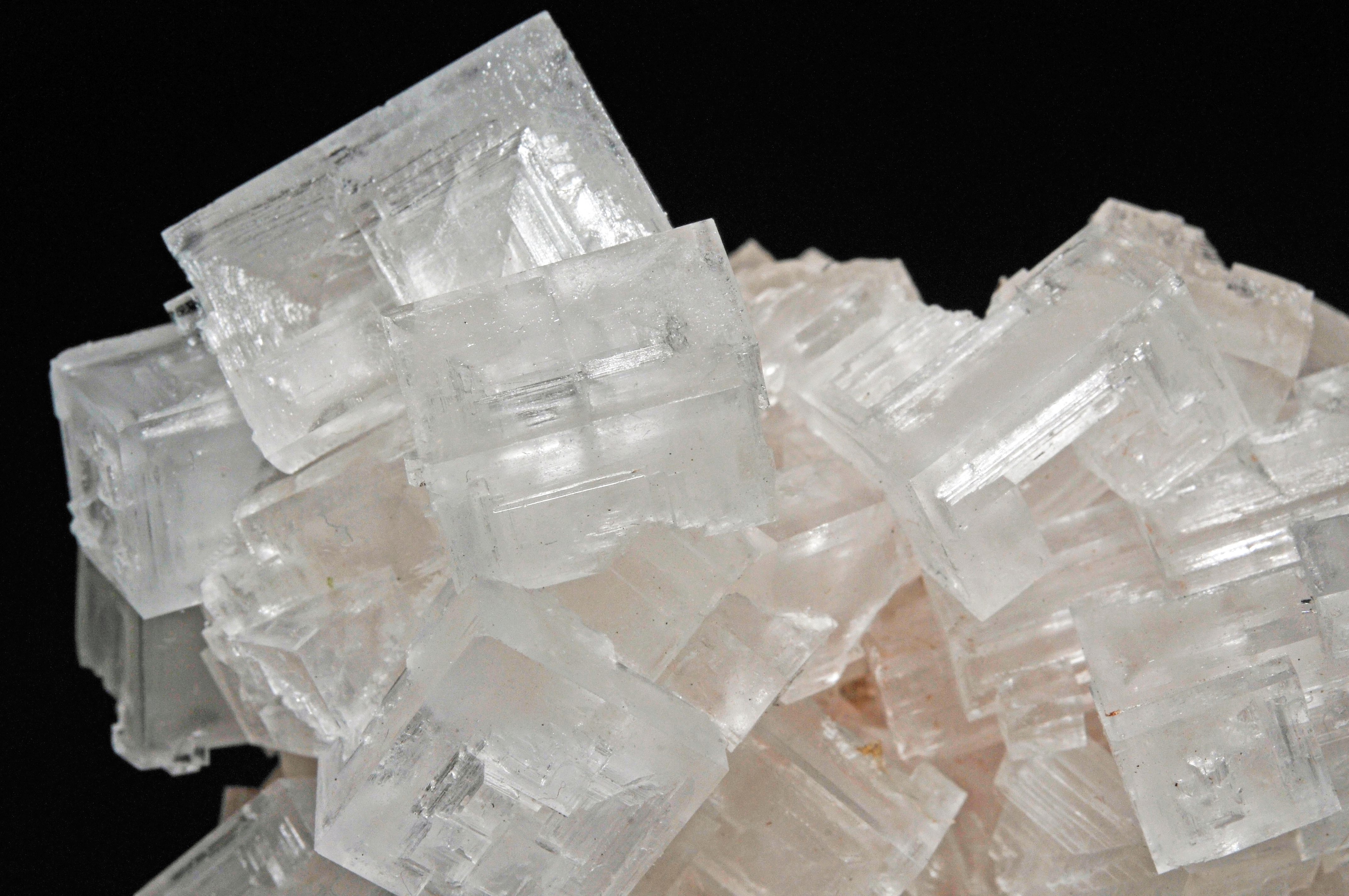
Halite, the mineral form of sodium chloride, is a likely ingredient in “pixie dust.” (Photo: Géry Parent/CC BY-ND 2.0)
In a video detailing Aquafina’s “HydRO-7™ Process,” Tanya Peacock, Pepsi Bottling Group’s Quality Assurance Manager, states: “Aquafina has recently been portrayed as tap water, just bottled in our facilities. And that is so far from the truth.”
Peacock explains Aquafina’s seven-step purification process (which includes prefiltration, high-intensity light, reverse osmosis, two polishing filters, and ozonation), and adds, “in these seven steps, we remove everything else—so all you’re left with is just pure water.”
Pixie dust is left unmentioned.
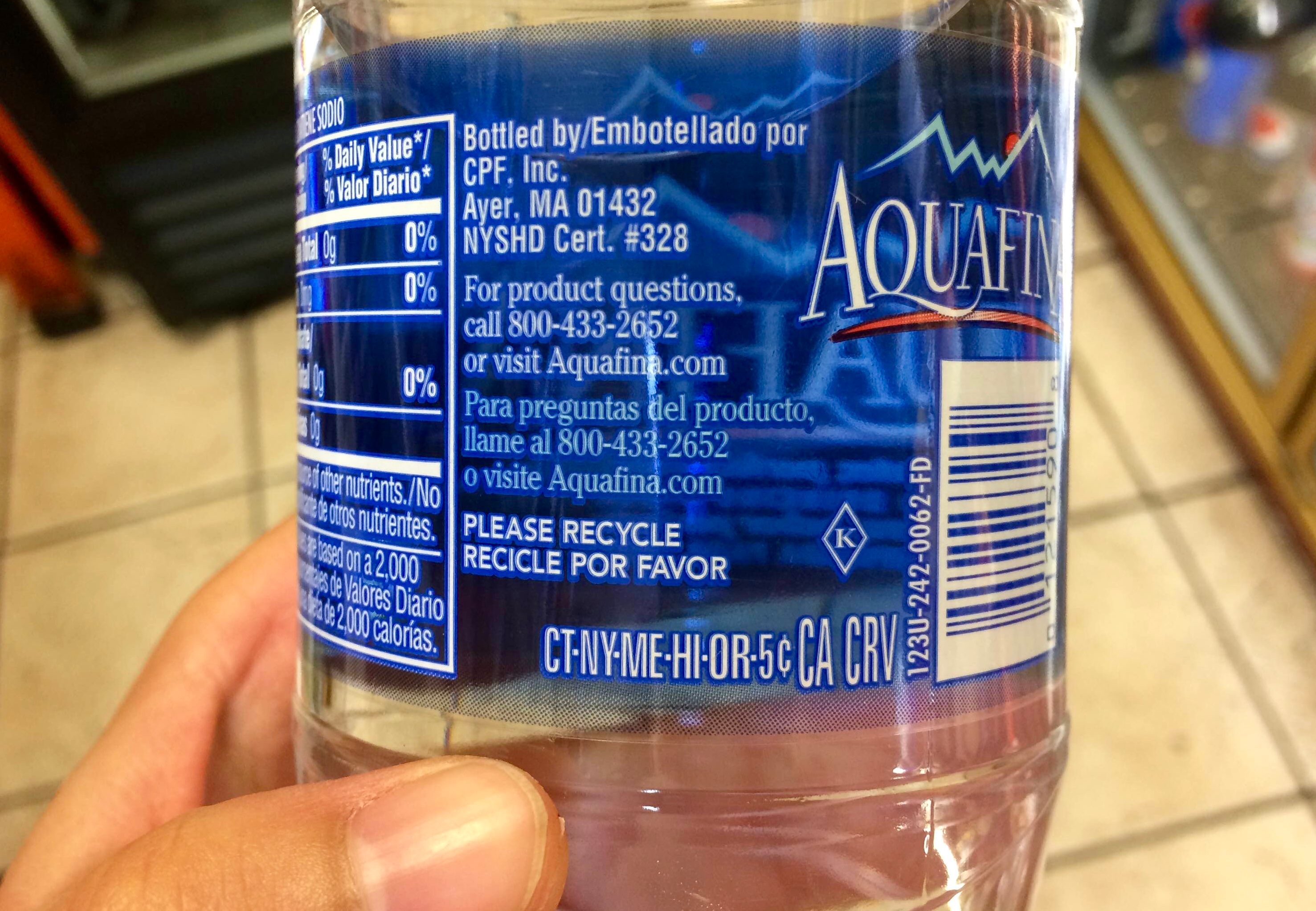
This bottle of Aquafina is simply repurposed Ayers, Massachusetts tap water. (Photo: Tao Tao Holmes)
Riese, the water sommelier, always advises people not to buy purified water when it’s already on tap. The majority of people he meets, he says, look dumbstruck when he explains the fundamentals of water.
“Most Americans have no clue the difference between purified, mineral, and spring water,” says Riese, with more than a hint of frustration. He explains that mineral water always comes from a spring, and while every mineral water is a spring water, not every spring water is a mineral water.
Mineral water has to contain a level of at least 250 milligrams of minerals, with higher mineral content meaning saltier and more tasteful water. Spring water, in contrast, has less than 250 milligrams, and your taste buds can easily detect the difference, each providing a distinct “mouthfeel,” or sensory impression.
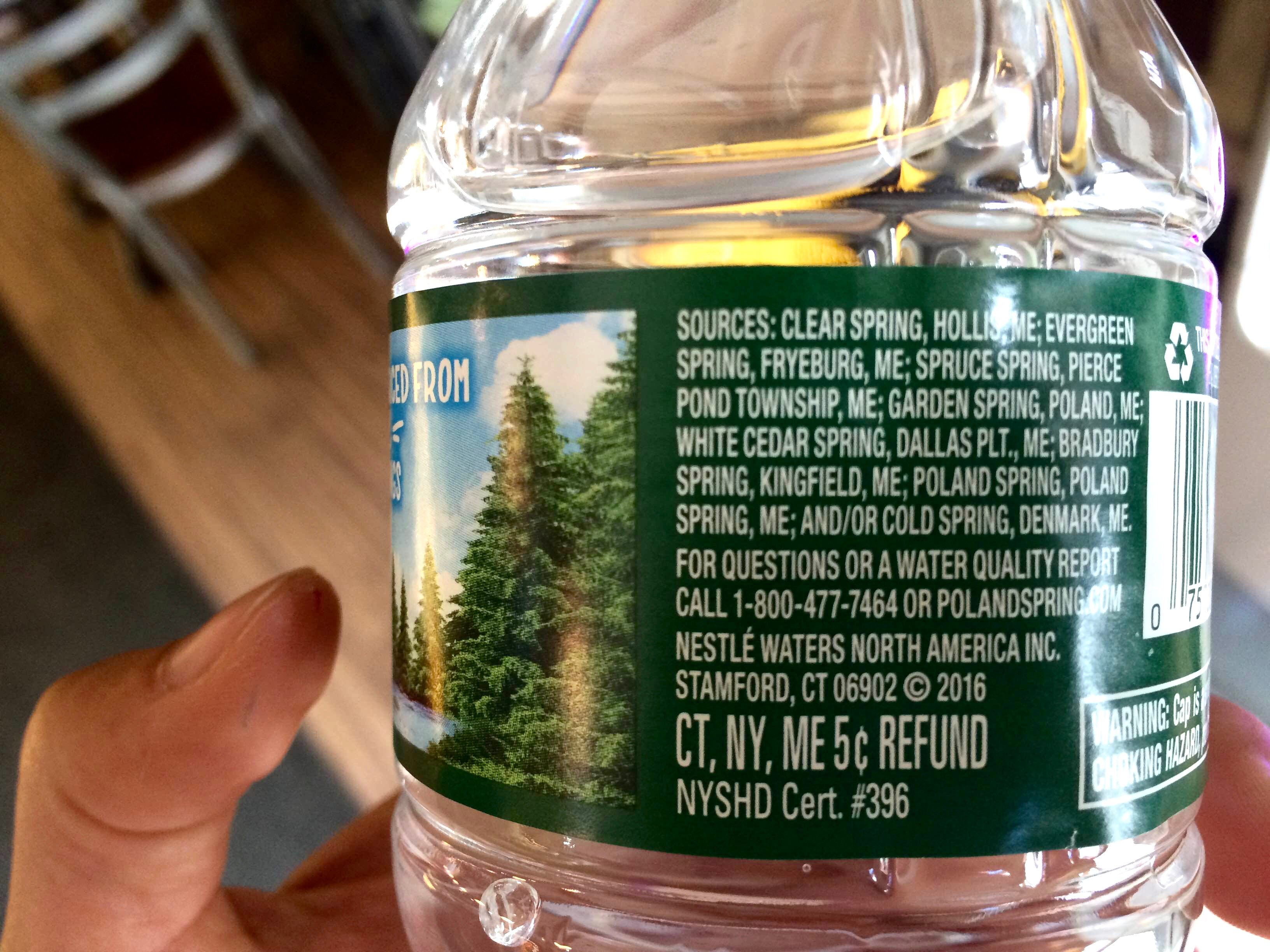
Poland Springs comes from a select group of Maine springs, listed on their label. (Photo: Tao Tao Holmes)
Mineral and spring waters cannot be altered, except perhaps to add carbonation. “That means I can taste mother nature,” says Riese. In stark contrast, purified water requires a mineral level so low that nobody’s taste buds will be offended.
That consistency, along with the bottled water industry’s effective marketing, is why so many consumers buy purified water, instead of mineral and spring waters, even though it’s highly unlikely to win any prizes at the “Oscars of Water.”
“Water is not just water,” says Riese, reminding us to appreciate the cool and soothing taste of place.



















Follow us on Twitter to get the latest on the world's hidden wonders.
Like us on Facebook to get the latest on the world's hidden wonders.
Follow us on Twitter Like us on Facebook